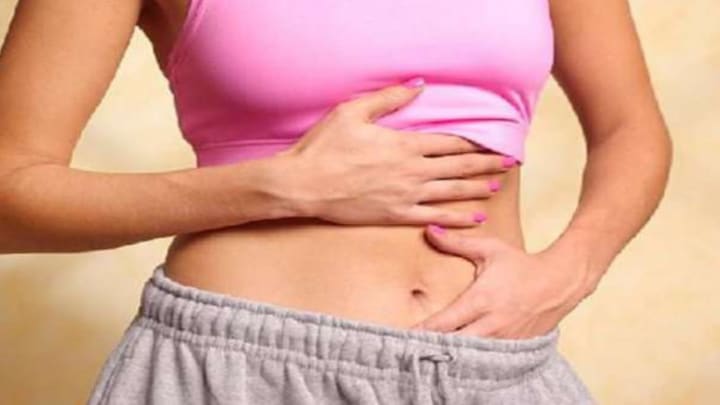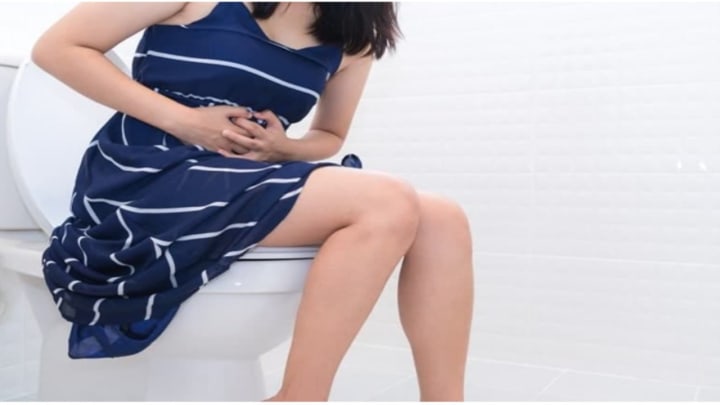Pelvic Pain: Symptoms, Causes, and Treatment
Pelvic Pain

Lowest part of Pelvic pain is more common in women. There are many different causes of pain in your pelvis. When you conceive and have pain along with other symptoms such as vaginal bleeding, they can be divided into different categories based on these symptoms. The most common types of reasons are mentioned below. Most types of pelvic pain can be relieved by the use of painkillers. Treatments are available for the reasons that recur.
What is Pelvis?
The pelvis is the lowest part of its belly. Your pelvic organs include your bowel, bladder, womb (uterus), and ovaries. Pelvic pain usually means pain that begins at one of these organs. In some cases, the pain starts from your pelvic bones which are located near these organs, or from nearby muscles, nerves, blood vessels, or joints. Therefore, there are several reasons for pelvic pain to occur.
Pelvic pain is more common in women than in men. This leaflet presents a solution to the most common causes of pelvic pain in women. Pelvic pain may be acute or chronic. Having acute pain means that this is the first time you are experiencing this type of pain. Chronic pain means that this pain has been a problem for you for a long time - more than six months.
What are the causes of pregnancy-related pelvic pain?
Abortion: Abortion indicates the loss of a pregnancy at any time up to the 24th week. 7 or 8 out of 10 miscarriages occur before 13 weeks of pregnancy. Common signs of miscarriage include vaginal bleeding and cramped pain in the lower belly (abdomen) or pelvis. After this, some tissue comes out of your vagina, which often appears as a blood clot.
Also Read - Love and Dating Tips for young people
Ectopic (ectopic) pregnancy:
An ectopic (ectopic) pregnancy is a pregnancy that develops outside the uterus (uterus). It occurs in about 1 in 100 pregnancies. Common symptoms include pain on one side of the lower abdomen or pelvis. It may develop rapidly, or gradually become severe over the course of several days. It can be very painful. Vaginal bleeding occurs in this condition, but not always. It is often darker than a period of bleeding.
Bursting of the corpus luteum cyst:
A corpus luteum produces hormones that help to keep you pregnant until other organs such as the umbilical cord have replaced it. It begins after the egg is released into the ovary. They are sometimes found when you have an ultrasound scan done for any reason. They often end without causing any problems and without any treatment. Sometimes it can cause a lot of swelling and burst and there can be severe pain on one side of your pelvis. If you have pain in your pelvis in the first 12 weeks of pregnancy, consult your doctor.
Premature delivery:
labor usually begins after 37 full weeks of pregnancy. Common abdominal pain usually begins due to a feeling of tightness in the lower abdomen. They become stronger, more painful, and proximal. You can also have a 'show'. It is a plug of mucus from the neck of the womb (cervix). If there is a continuous discharge of fluid from your vagina, your waters can break. You should contact your midwife immediately. If you have pelvic pain from a regular pattern, contact your midwife for advice.
Sudden rupture of the umbilical cord:
Rarely (about 6 times per 1,000 deliveries), the umbilical cord is separated from the wall of the womb. Such a miscarriage occurs before 24 weeks of pregnancy; However, after 24 weeks it is called an abrupt rupture. When this happens, it is an emergency. The reason for this is that the child depends on the placenta for food and oxygen. Without a working cord, the baby will die. The maternity department staff will try to give birth to the baby as soon as possible. This is usually done by the emergency cesarean operation.
Also Read about - https://www.2h-fit.net/
What are the non-pregnancy related causes of pelvic pain?
Gynecological problems
Ovulation: Ovulation is the production of eggs in your ovaries. Some women experience severe pain when the eggs are free. This ovulation pain is called 'Mittelschmerz' (moderate pain - because it occurs in the middle cycle). Depending on the release of the eggs from the ovary, a different side pain may occur every month. This pain only lasts for a few hours but can be severe in some women.
Menstrual pain :
Most women experience little pain during their menstrual period. The pain is usually mild, but in about 1 in 10 women, the pain is severe and can affect their daily functioning. Sometimes the pain can be so severe that they may be unable to go to school or work. The pain caused by menstruation is called 'Dysmenorrhea'.

Pelvic inflammatory disease (PID):
PID is an infection of your womb. The bacteria that cause infection usually enter your womb from your vagina or cervix. Most cases are caused by chlamydia or gonorrhea. Symptoms of PID include pain in your lower abdomen or pelvis, high temperature (fever), abnormal vaginal bleeding, and vaginal discharge.
Ovarian cyst (cyst) rupture or twitch:
An ovarian cyst (cyst) is a sac filled with fluid that develops into an ovary. Most ovarian cysts are non-carcinogenic (benign) and have no symptoms. Some have pain and irregular bleeding. Pain may occur when they are bursting (breaking) or twisting (called cramping). Some types of ovarian cysts do not require any treatment which is cured.
Degenerative (disruptive) changes in fibroids:
Fibroids are non-cancerous growths that can occur in your womb. They are common and usually do not show any symptoms. However, due to them, you can sometimes face severe menstruation, abdominal bloating, and urinary problems. Rarely, fibroids exit its blood supply. This can force it to shrink (decompose) which can be very painful.
Endometriosis :
This is a condition that occurs in women between the ages of 13 and 50 years. It occurs most commonly in women in their thirties. It is more common in women who have problems conceiving. It can be found in 1 in 5 of these women. This can cause pain during your menstrual period. You can also cause pain when you have sex.
Chronic Pelvic Pain:
This term is used when a woman has pain for at least six months. Chronic pelvic pain can occur in about 1 in 6 women, so it is very common. Sometimes a cause is also explored (as noted above) and sometimes there is no apparent cause. If the cause of your chronic pelvic pain can be ascertained, treatment can be focused on that cause. Some women never require a specific treatment to explain their pain. If no cause can be found, then your treatment will be focused on the management of pain. In such a situation it may be helpful to keep a diary for the symptoms. It can identify the pattern of pain in your life and the reasons for its onset. There is an increased risk of developing long-term pelvic pain due to depression, chronic stress or previous history of sexual or physical abuse. In addition, pain often gets worse due to emotional stress and living with long-term pain leads to increased emotional distress. Your doctor will consider psychological treatment to help with the pain. See the reference below for more information.

Appendicitis:
Appendicitis means inflammation in your appendix. The appendix is a small sac that exits the intestine wall. Appendicitis is common. Typical symptoms include abdominal pain and sickness (vomiting), which gradually worsen over 6–24 hours. Some people have less specific symptoms. The swollen appendix is cut and removed by an operation before it bursts. Perforated appendix can be severe.
Irritable bowel syndrome or incandescent bowel syndrome (IBS):
IBS is a common bowel disorder. The reason for this is not known. Symptoms can vary greatly and may include abdominal pain, bloating, and sometimes diarrhea attack and/or constipation. Its symptoms appear and disappear. There is no cure for IBS but symptoms can be resolved with treatment.
Cystitis:
It is a urinary infection of the bladder. It is a common disease of women. A short course of antibiotics is a common treatment. It can also be easily cured without the need of antibiotics. Cystitis resolves quickly without complication in most cases.
If you have symptoms of cystitis but no signs of infection are detected when your urine is checked, you may suffer from interstitial cystitis. This is a condition that is poorly understood, in which the bladder walls swell. It may cause long-term pain. It is also known as 'Painful Bladder Syndrome'.
Adhesion (sticking):
Adhesion (sticking) can occur after surgery. When your body tries to heal after surgery, the tissues become sticky. Stickiness can cause tissues to stick together accidentally. The bowel is most likely to be affected. This may cause you pain.
Blocked hernia:
Hernia occurs when there is a weakness in the abdominal wall. As a result, some of the contents within the abdomen can be pushed through the skin (bulge). And you may feel a soft lump or swelling under the skin. There may be a slight chance of hernia being blocked.
A hernia is blocked when too much of the bowel comes through the gaps in the muscles or ligaments and then becomes infected when it shrinks. This can cut off the blood supply to the part of the intestine in the hernia. In this case, there may be severe pain in the intestinal part of the hernia and some damage to the intestine.
Spasms and bone problems
There may be pain due to problems in your lower back, your pelvic bones and proximal joints such as your hip joints. It is often clear where the pain is coming from. However, in some cases, it may feel like the pain is in your pelvis and it can be difficult to indicate the exact location of its origin.

What should I do if I have pelvic pain?
There are many different causes of pelvic pain. Some causes are more serious than others. If you believe that you are aware of the cause or pain - for example, menstrual pain - you can try taking painkillers such as paracetamol or ibuprofen.
If you are not sure about the causes of pain or if the pain is severe, then you should consult a doctor. In particular, some causes are emergencies - for example, an ectopic pregnancy. If you suspect this, seek medical attention immediately. If the pain keeps coming back, see a doctor. For many of the conditions listed above, treatments are available.
What type of investigation can be recommended?
Your doctor may ask you some questions and examine you. Depending on the goals they receive, they may suggest you do some further investigations.
Urinary infection is a very common cause of pelvic pain and your doctor may ask you to give a urine sample. If they feel there is a risk of infection, they may ask you to give them a sample (swab). If you are unsure, a pregnancy test may also be advised. They can arrange an ultrasound (if suspected of miscarriage or ectopic abortion) immediately at your local hospital. A routine ultrasound scan can be arranged to diagnose problems such as ovarian cysts.
Laparoscopy is usually performed by gynecologists. In this process, a small telescope is inserted into your stomach by making a small incision. This allows the doctor to see inside your pelvis. Intestinal specialists can use flexible telescopes to view your bowel. The gastric and stomach can be seen by gastroscopy.
Who can be advised to manage the problem?
It depends on the possible reasons. To know more about this, follow the separate link of the separate leaflet above.
If an emergency does not arise due to the problem, your doctor may refer you to a specialist advisor for further investigation as described above.
If you have your medicine and/or leaflets while reporting, this will prove useful.
Also read: Best tips for Vidmate to download video





Comments
There are no comments for this story
Be the first to respond and start the conversation.